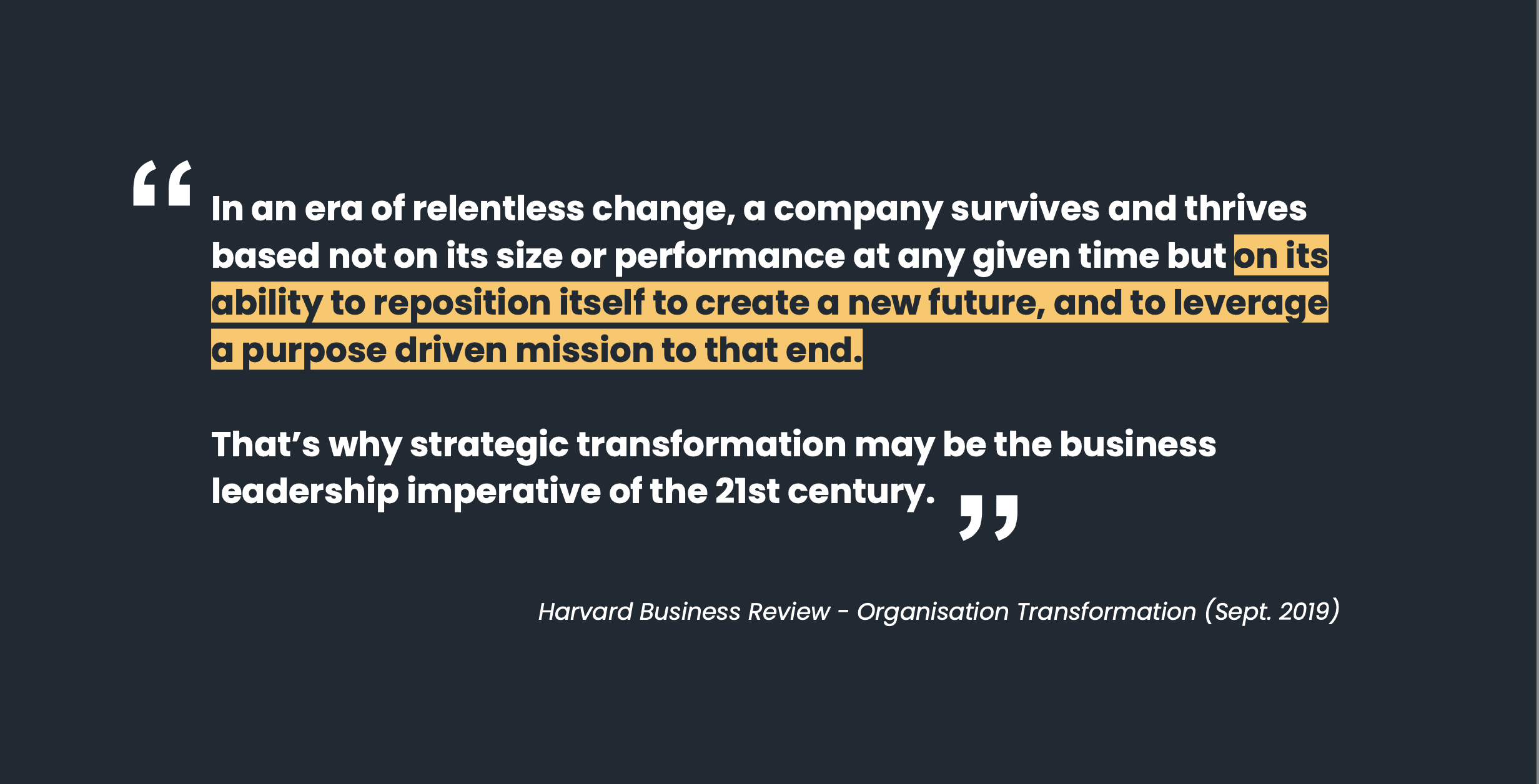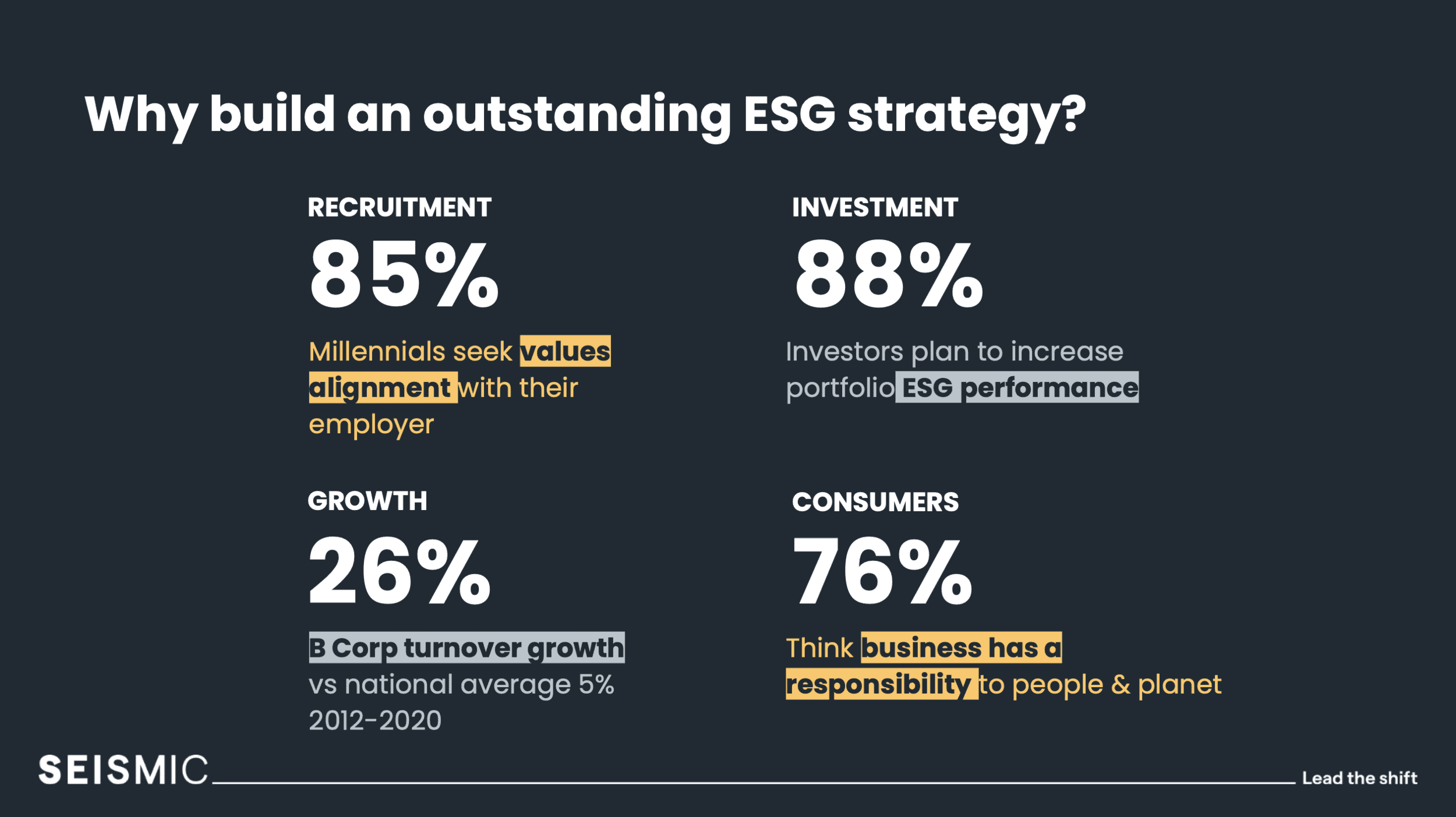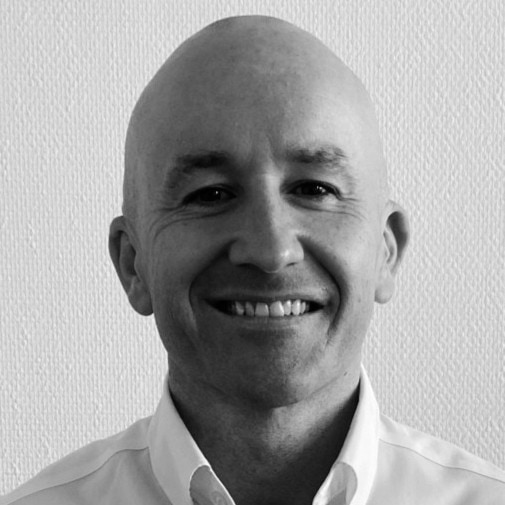
Seismic held a breakfast briefing for our growing community on how to action your Environmental, Social and Governance (ESG) strategy. We share highlights with you here.
Why is ESG strategy important for businesses?
There is a responsibility, and an increasingly urgent need, for the private sector to lead us out of the environmental and social crisis in which we find ourselves. There’s an increasing amount of evidence of the correlation between where there is authentic purpose and desire, from an organisational point of view, to make a positive impact socially or environmentally, and the traditional measures of business success, including shareholder return. There is also a lot more insight and opportunity for businesses to take the front foot.

Twenty years ago, business strategy was core, while ESG strategy was on the back of an envelop, or on a sign on someone who was passionate’s desk, they were disconnected and not a lot of action happened, as a result.
Nowadays, ESG strategy has to be a subset of business strategy, ESG now judges performance on how a business is progressing, for some, ESG strategy is even bigger and bolder. Patagonia, a client that Seismic have worked with, provides an extreme case of shifting ownership to a point of serving the higher purpose, but one that inspires us all.
The 3 stages of actioning ESG strategy
Paul Lewis, our Co-Founder and Chief Executive Officer, shared his experience in setting company strategy around ESG. He highlighted that this is built on the foundations of your ambition, your focus and execution. To action an ESG strategy, it is important In a bit more detail, we work with our clients to articulate and build out:
- The WHY: The intentionality of a company’s purpose/mission/vision
The extent to which your purpose is true and authentic, and points towards a higher context. We help to refine these and move leadership teams to a place of buy-in from an early stage. - The WHAT: Putting a considered, impactful strategy together
Utilising the correct framework to inform your areas of focus, B Corp being a particularly robust example, that we feel everyone can use (regardless of your intention to certify as a B Corp or not), and consulting relevant stakeholders, to integrate a wider range of perspectives into your journey. - The HOW: Embedding the right structures to turn that into reality
The roll out, from action planning, resourcing and governance, to achieving further engagement.
The role of communication
Olivia Hill, our Head of Communications, highlighted the importance of communicating strategy, based on genuine intention and actions.
If you don’t communicate with confidence what you are doing for people and the planet, you are losing consumers.
This is all about the journey, being authentic and backing up what you say with evidence of what you are doing. This is where the annual impact report provides a core place for sharing where you are on the journey, and the improvements and where you are getting to, from which you can build out to all your channels.

Insights from CEF
We heard from Connor Dalton, Director of ESG and Sustainability at CEF, the UKs leading multichannel electrical distributor. Connor has a wealth of experience, he was previously in senior sustainability roles in retail at Aldi and Sainsbury’s and before that, in the construction wholesale sector.
He spoke to us about his work securing alignment internally, with senior leaders and internal departments, as well as with external stakeholders, to really turn sustainability strategy into action.
Connor has been part of in-house sustainability teams for large businesses for the last 20 years, so we were keen to hear his insights on how to manage sustainability sceptics. He acknowledged that he’s had to deal with his share of tricky stakeholders and shared that he’s shifted some of his biggest sceptics to sustainability champions. For him, the key to gaining support is to spend time getting to know people, in particular, getting to a point of understanding an individual’s drivers and priorities, especially as they relate to the individual’s role in the company.
Connor learned that people have their own, different, motivations. He says the he doesn’t care about what these motivations might be, but makes sure he appeals to these, as levers for turning ESG strategy into action. This helped their team become the then leading country from within the Aldi globe on the topic of Science Based Targets.
“Central to turning ESG strategy into action is people. At every stage of the journey, they’re fundamental, it is people who drive not just what you do, but how you do it.”
How Seismic can help you build and action an ESG strategy
We partner with organisations to help them build top-tier ESG strategies. We can help you get started and integrate your core business strategy with your ESG strategy to drive long-term positive change. Get in touch.

